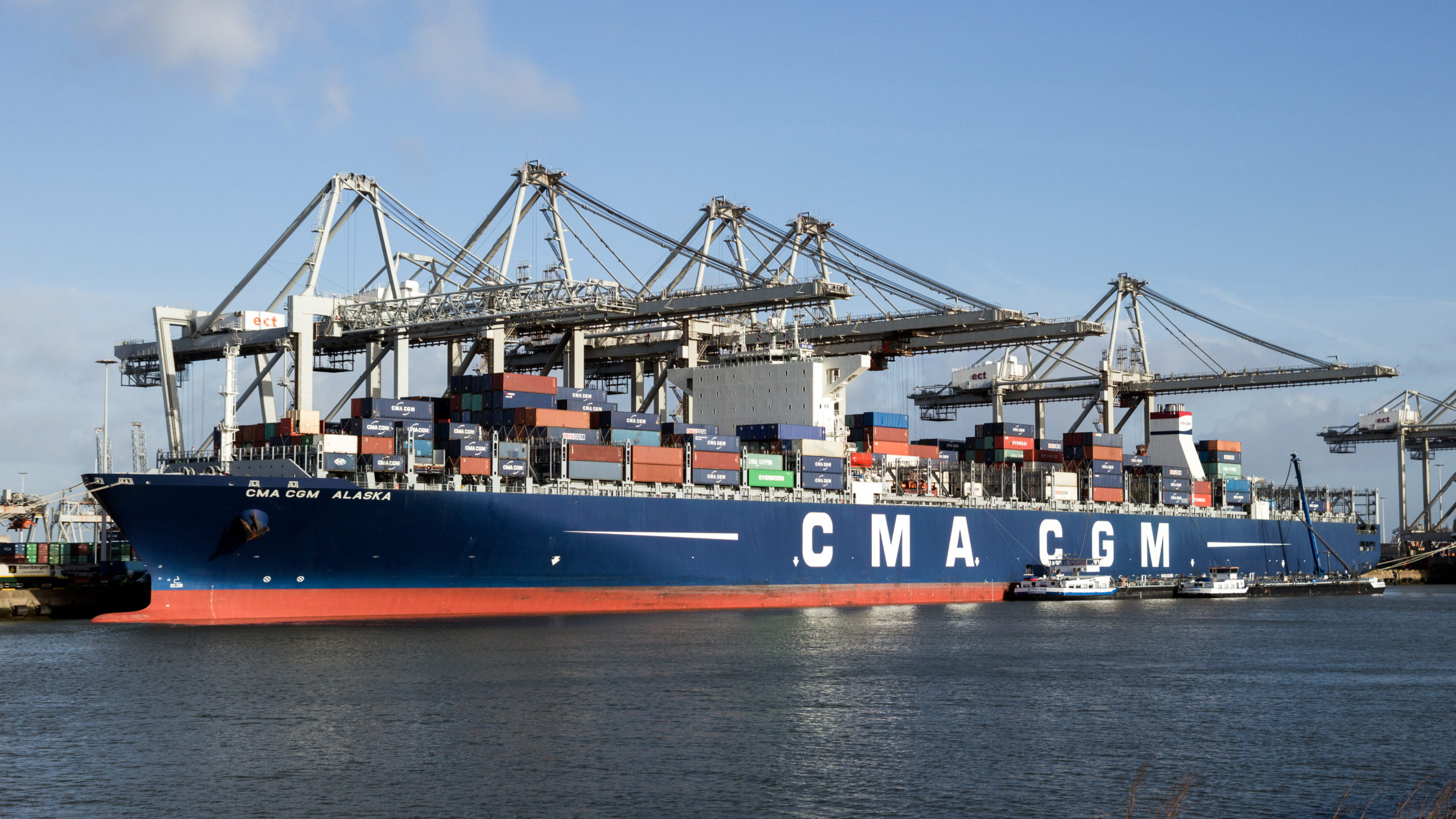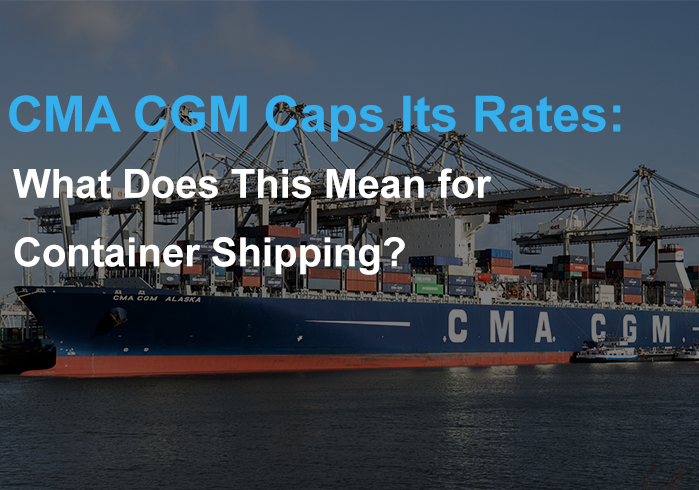
CMA CGM is based in France and is the third largest ocean carrier in the world today; they recently decided to halt further price increases on their spot freights. The notification indicates that starting February 1st, there will be no more increases in rates across the globe. Given CMA CGM’s position in the shipping industry, there are serious implications that result from this decision.
Some experts consider this decision to be a game-changer. However, the sceptics are not convinced that this move is meant to provide price relief to customers and the anticipated bottom-line effects may not materialize. Others are of the view that this is nothing more than a public relations exercise without really dealing with spot capacity and price issues.
This was a surprise announcement despite the continued rise of spot freights because of port congestion. There has been a significant imbalance between supply and demand for maritime container transport. CMA CGM noted this fact when making the announcement. The market-driven rate increases are a fact of the industry despite the decision to put the increases on hold.
The decision affects all the brands associated with CMA including CGM, APL, ANL, Mercosul, Containerships, and CNC. CMA has suggested that these caps are meant to prioritize long-term relationships with customers rather than short-term profitability. Nevertheless, these price increments were bound to attract government scrutiny so the cap may be a form of pre-emptive self-regulation.
Increased rates mean increased government scrutiny
Regulators have been concerned about the unrestrained rate increases in the industry, particularly in the way that they affect the stability and sustainability of the sector. CMA is therefore opportune in trying to take action to prevent any controls in that sense. For example, Drewry’s World Container Index weekly assessment reached the heights of $10,834 per forty-foot equivalent unit.
At the same time, the Shanghai-Los Angeles assessment rose to $11,569 per FEU. Meanwhile, the Shanghai-New York assessment rose to $15,124 per FEU. The Freightos Baltic Daily Index recorded the Asia-West Coast at $20,586 per day while the Asia-East Coast was $22,173 per day. These quotations are inclusive of premium surcharges for USA trade assessments.
It is not surprising that China, Europe, and USA authorities held a virtual summit to discuss the bottlenecks that were impacting their supply chain. An oversight role with a monitoring and evaluation function was one of the workable solutions. In the USA, the House of Representatives introduced the Ocean Shipping Reform Act. The law aims to address carrier malpractices as one of its core provisions. Additionally, the Federal Maritime Commission inaugurated a cooperative agreement with the Justice Department to fight against anti-competitive practices in the shipping industry.
Calls for the chaos to end
Industry experts have long been calling for the pricing jungle of confusion to end. CMA appears to recognize the damage that it could cause to the industry if it does not seem to have any control over its pricing strategies. Although the cap does not involve reductions on the already excessive rates, it is a step in the right direction. The reality is that the costs of doing business in the shipping industry remain incredibly high.
Even where the base rates are being capped, there may be other costs involved. For example, some providers charge additional carrier fees which are not included in the base rate that has been capped. US importers are facing an additional challenge of high-margin goods with volumes being shifted at inconvenient and extended time frames. If the price of shipping is already high, these inconveniences take on an additional significance.
Others have noted that the spot price limit runs from September to January, yet capacity for those months is likely to be already full. That then raises questions about the effectiveness of the CMA cap, if not its motives as well. A more transparent approach might have involved explaining the exact capacity levels that are affected by the cap. It is not particularly helpful to announce a price reduction or cap for services that are no longer available. Then there is the challenge of bringing in profits for shareholders without alienating customers.
Customer needs and shareholder demands
Shareholders will want to maximize their return on investment and companies such as CMA CGM cannot afford to ignore these priorities. At the same time, customers may become disillusioned by the ever-increasing spot rates. Trying to make as much money as possible in the short-term may not bode well for the long-term sustainability of these companies.
That is why experts anticipate some announcements in the short term that offer goodwill to customers in the form of capped prices without compromising the long-term sustainability of the businesses in this industry. In any case, all indicators are that the fourth quarter is going to be a real bonus for ocean liners with all the demand in the aftermath of the worst effects of Covid-19.
One of the solutions might be to distinguish between contract and spot customers, with contract customers getting better leeway than spot customers. This could be a better way of dealing with demand from loyal customers who are prioritized when allocating capacity. Meanwhile the spot customers would only get that which contract customers have not used up. Moreover, that would mean that the spot-rate cap will have a limited impact on the bottom-line.
A market eating up capacity
The shipping industry is still grappling with the problem of capacity. In such circumstances, tough decisions must be made about priorities. Lars Jensen of Vespucci Maritime is of the view that contract customers will be the priority when compared to short-term spot arrangements. So far, price has been the deciding factor especially for marginal slots which can attract soaring prices. However, CMA CGM is now showing that long-term sustainability may also be playing a role.
Customers with long-term and durable relationships are valuable because they are there even in the tough times. The seasoned carriers understand this and will calibrate their policies accordingly. That means that smaller customers with one-off relationships are not going to be prioritized when allocating space.
Wrapping up
Congestion and increasing demand have meant that there is a shortage of shipping capacity. The result has been escalating prices. CMA CGM has finally capped prices for spot rates. Instead of looking for short term profits, some companies may follow suit and offer concessions to their long-term, loyal, and high-volume customers. This will mean that price is no longer as important as loyalty when allocating marginal space.



One Comment on ““CMA CGM Caps Its Rates: What Does This Mean for Container Shipping?””
Shortage of shipping capacity is the hot topic before Xmas 2021. I think to write blog post about it.